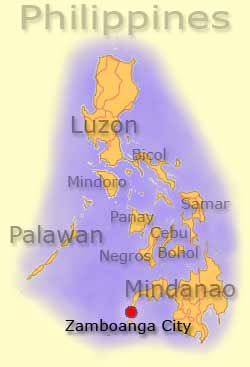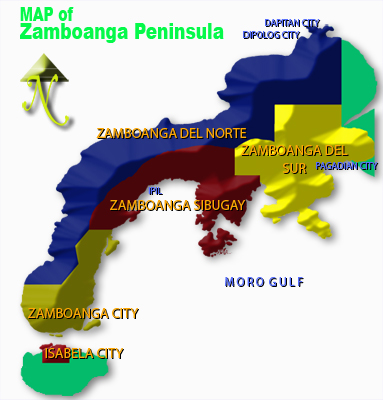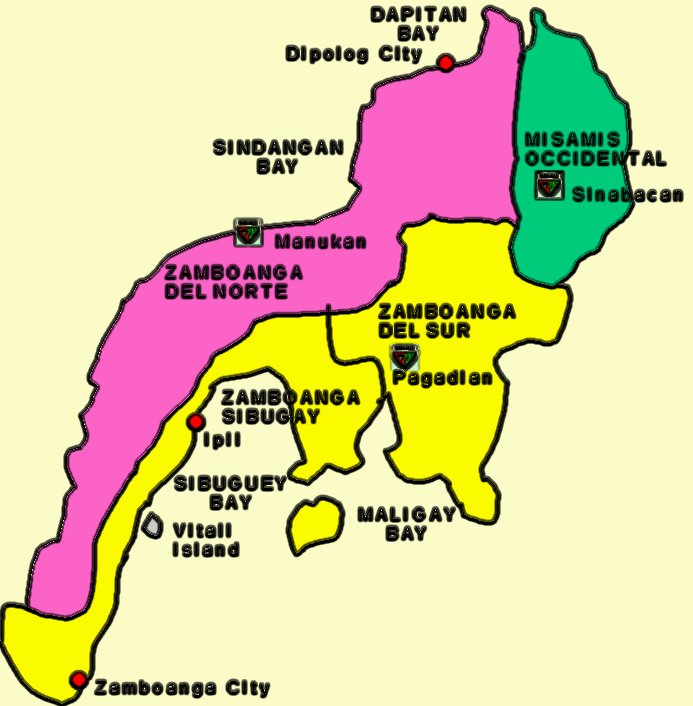
-
МјРЇСІИёСЖШИМі
-
 И№ОЫ КИОЫ Йъ ЗЛЦЎЧЯБт~ ИЎСЖЦЎ ПЙОрБюСі
И№ОЫ КИОЫ Йъ ЗЛЦЎЧЯБт~ ИЎСЖЦЎ ПЙОрБюСі 88,205
88,205 -
 [ЧЪИЎЧЩ ММКЮ] ФЋИ№ХзНК ПЉЧр 100Йш СёБтБт
[ЧЪИЎЧЩ ММКЮ] ФЋИ№ХзНК ПЉЧр 100Йш СёБтБт 38,683
38,683 -
 ИЖДвЖѓ НУГЛ - ИЎРп АјПјСЄКИ. (ЛчСј 16Рх ЦїЧд)
ИЖДвЖѓ НУГЛ - ИЎРп АјПјСЄКИ. (ЛчСј 16Рх ЦїЧд) 30,144
30,144 -
 ММКЮРЧ СіПЊСЄКИ15,141
ММКЮРЧ СіПЊСЄКИ15,141 -
 ИЖДвЖѓ БйБГ - ЕћАЁРЬЕћРЬ ПЉЧр СЄКИ13,669
ИЖДвЖѓ БйБГ - ЕћАЁРЬЕћРЬ ПЉЧр СЄКИ13,669 -
 [ЧЪИЎЧЩ ММКЮ/ИЗХК] ШЃХк МїЙк ПфБн Йз СЄКИ12,676
[ЧЪИЎЧЩ ММКЮ/ИЗХК] ШЃХк МїЙк ПфБн Йз СЄКИ12,676 -
 КИЖѓФЋРЬРЧ И№Еч И№НРРЛ КММі РжДТ ЛчСјУИ.12,556
КИЖѓФЋРЬРЧ И№Еч И№НРРЛ КММі РжДТ ЛчСјУИ.12,556 -
 ИЖДвЖѓ БйБГ - ЦХЛѓЧб ЦјЦї ПЉЧрСЄКИ12,109
ИЖДвЖѓ БйБГ - ЦХЛѓЧб ЦјЦї ПЉЧрСЄКИ12,109 -
 [ММКЮ-ЙшМБТјРх] МБЙкШИЛч РќШЙјШЃПЁПф~11,678
[ММКЮ-ЙшМБТјРх] МБЙкШИЛч РќШЙјШЃПЁПф~11,678 -
 ИЖДвЖѓ СіПЊ(ПЁИЃЙЬХИ -ИЛЖѓХз)РЧ СіЕЕ/ЧбБЙ РННФСЁ/МюЧЮИє11,570
ИЖДвЖѓ СіПЊ(ПЁИЃЙЬХИ -ИЛЖѓХз)РЧ СіЕЕ/ЧбБЙ РННФСЁ/МюЧЮИє11,570



Zamboanga City
The City of Zamboanga (Tagalog: Lungsod ng Zamboanga) is a highly urbanized city located in Mindanao, Philippines. It has a population of more than 807,129 according to the 2010 census. Zamboanga is the 6th most populous and 3rd largest city by land area in the Philippines. It is the commercial and industrial center of Zamboanga Peninsula.
Zamboanga was the capital of the former Moro Province, now Mindanao, from 1903 to 1913. On September 15, 1911, the Municipalidad de Zamboanga was converted into a city by the legislative order Act. No.272. Known for Hispanic influences in its culture, it bears the nickname Ciudad Latina de Asia (Asia's Latin City).[
Population
The population of Zamboanga has registered an increase of 172,613 (an average annual growth rate of 3.54 percent) in seven years, latest data from the National Statistics Office (NSO) showed. The data released by the NSO regional office based in this city showed that from 601,794 in 2000, the population grew to 807,129 as of May 1, 2010.[25]
Among the 98 barangays in this Zamboanga, Talon-Talon was the most populous with a 3.9-percent share of this cityтs population. Next to Talon-Talon were Tetuan (3.8 percent), Baliwasan (3.6 percent), Pasonanca (3.5 percent), Calarian and Tumaga both with 3.3-percent share, and San Jose Gusu (3.2 percent).
Religion
According to statistics compiled by the Philippine government, the most dominant religion in the city is Christianity with 73% of the population adhering to the faith. The majority of Christians are Roman Catholics with minorities of Protestants and Orthodox Christians. The remaining 27% percent belongs to other non-Christian faiths such us Buddhism and Islam.
Language
The Official and/or Native language of Zamboanga City is Zamboangueño Chavacano, a Philippine-Spanish Creole. Other common languages in the city are Tagalog, English and Bisaya/Cebuano. Fookien (a Chinese dialect) and Tausug are also prevalent. Approximately 64% of the cityтs population consists of the native families of the old Zamboanga, who were greatly influenced by the Spanish culture and lifestyle which is now called as a pure Chavacano de Zamboanga or Zamboangueño. Whilst 36% of the cityтs population is composed of cultural minority members, groups of Muslim communities, such as the Subanens, Tausugs, Yakans, Samals, and the Badjaos are dispersed around the city.
Climate and temperature
Zamboanga features a tropical wet and dry climate under the Koppen climate classification.
History
Zamboanga was founded in the late 12th or early 13th century, with the earliest people living there being the Subanen, an indigenous tribe of Malay origin. The Subanen people's name for Zamboanga, 'Sung Lupa', means 'Pointed Land'. Speculation that the name of zamboanga comes from the word 'Jambangan', meaning the 'Land of Flowers', is met by others insisting the name derives from the word 'Saguan' or 'Sambuan', A Malay word for the paddle used by natives to paddle the vintas in the sea. Still another possible origin is 'Sambon' which refers to herbal plants that grew abundantly in the city.[6] Badjao, Samal, Tausug and the Yakan tribes from Malayan descent settled in the same part of Mindanao in the early 14th century.[7] Mohammedanism and Islam gained predominance in the 15th century in the Philippines first as a non-indigenous religion from these Malay peoples after Jews and Christians arrived.
Spanish rule
The Spaniards arrived in the country in the year 1520, as the first European invaders in the country. In the year 1569 Zamboanga was chosen as the site of the Spanish settlement and garrison on La Caldera (now called Barrio Recodo). The goal was to use it for the reinforcement of their troops in the country, making way for Christian settlements by converting the people and protecting the island against foreign invaders and Moro pirates. After 3 decades (1599), the fort was closed and transferred to Cebu due to great concerns about attack by the English on that island, which did not occur. After having abandoned the city, the Spaniards joined forces with Visayan troops and reached the shore of Zamboanga to bring peace to the island against Moro pirates.
Zamboanga became the main headquarters of the Spaniards in 1634 upon approval of King Philip IV of Spain; this is now the official establishment of the city by the Spaniards. Thousands of Spanish troops headed by a Governor General from Spain took the approval to build the first Zamboanga fortress (now called Fort Pilar) in Zamboanga to forestall enemies in Mindanao like Moro pirates and other foreign invaders. The Zamboanga fortress became the main focus of a number of battles between Moros, Chinese and Spaniards while the Spanish ruled the region from 16th to 18th centuries. While the region was already dominated by Catholicism, Muslims kept up a protracted struggle against the ruling Spaniards in the country into the 18th century.
In the Year 1831, the Custom house in Zamboanga was established as a port, and it became the main port for direct communication, trading some goods and other services to most of Europe, Southeast Asia and Latin America.The Americans arrived in the Philippines, headed by General Weyler with thousands of troops to defeat the Spaniards who ruled it more than three centuries. The Spanish Government sent more than 80,000 Spanish troops in the Philippines. The Spanish Government completely and peacefully surrendered the islands to the United States in the 1890s.
American and Japanese period
Before the end of the 19th century; The Republic of Zamboanga was established during the American period in the Philippines and it briefly existed from May 18, 1899 to March 1903. The first President of the Republic of Zamboanga was General Vicente Alvarez and succeeded by Isidoro Midel and Mariano Arquiza.
During the American colonial period. Zamboanga hosted a number of American regional governors, including General John J. Pershing, who was military commander/governor of the Moro Province from 1909 to 1914. Gen. "Black Jack" Pershing became the Supreme Commander of the American Expeditionary Force in Europe during World War I when the US entered the war in 1917. The entire Moro Province of Mindanao was administered directly from the city, effectively making the Zamboanga Mindanao's first and only Capital City. Soon after the establishment of the Commonwealth, it was the center of commerce, trade, and government of Mindanao Island, being the capital of the Moro Province.
Zamboanga became a chartered city in the year 1936. In Pre-World War II, Pettit Barracks, a part of the US Army's 43d Infantry Regiment (PS), was stationed. When the Japanese invaded the Philippines, they were headed by Vice Admiral Skugiyama Rokuzo and accompanied with Rear Admiral Naosaburo Irifune and landed at Zamboanga on March 2, 1942.They established a defense headquarters in the city while ruling the government in more than two years. The Japanese government in the city was eventually overtaken by American and Filipino forces in 1945.
Post-World War II
In 1990, Zamboanga City was declared as the commercial and industrial center of the Western Mindanao region (now Zamboanga Peninsula).
- ЁЄ
- ЁЄ
- ЁЄ
- ЁЄ
- ЁЄ
- ЁЄ
- ЁЄ
- ЁЄ
- ЁЄ
- ЁЄNmjNUuzXqd
- ЁЄNmjNUuzXqd
- ЁЄNmjNUuzXqd
- ЁЄNmjNUuzXqd
- ЁЄNmjNUuzXqd
- ЁЄNmjNUuzXqd















 ЧЪРкДхФФ ОпАЃЛѓДу ПРЧТ
ЧЪРкДхФФ ОпАЃЛѓДу ПРЧТ 11ГтПЌМг МвКёРкИИСЗ 1РЇ
11ГтПЌМг МвКёРкИИСЗ 1РЇ
 ГЛАд ИТДТ ОюЧаПј УЃБт
ГЛАд ИТДТ ОюЧаПј УЃБт
 ИЎОѓ ЧаБГ ЙцЙЎБт
ИЎОѓ ЧаБГ ЙцЙЎБт
 СжИЛПЁ ГЛАЁ ОЕ КёПыРК?
СжИЛПЁ ГЛАЁ ОЕ КёПыРК? УжАэАЁМККё РЬКЅЦЎ СёБтБт
УжАэАЁМККё РЬКЅЦЎ СёБтБт
 ЧіСіПЁМЕЕ ЧЪРкДхФФ!
ЧіСіПЁМЕЕ ЧЪРкДхФФ! ЧіСіПЁМ АЁДЩЧб
ЧіСіПЁМ АЁДЩЧб









 ЧЪРк ЦЏБо Ч§ХУ! ФСНУОюСі МКёНК
ЧЪРк ЦЏБо Ч§ХУ! ФСНУОюСі МКёНК



 АЁСЗПЌМіЗЮ ДйЧдАд ОзЦМКёЦМ
АЁСЗПЌМіЗЮ ДйЧдАд ОзЦМКёЦМ




























